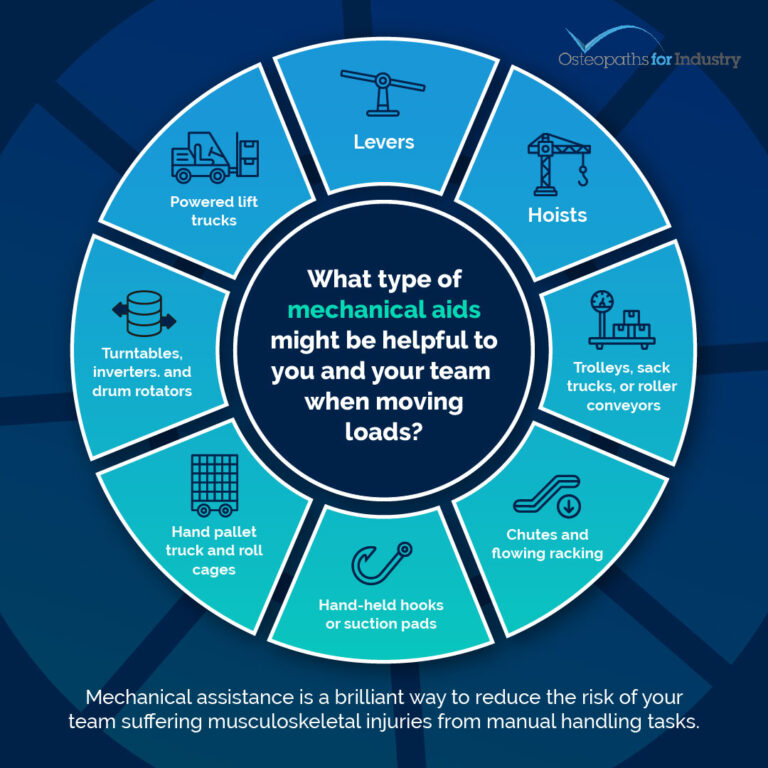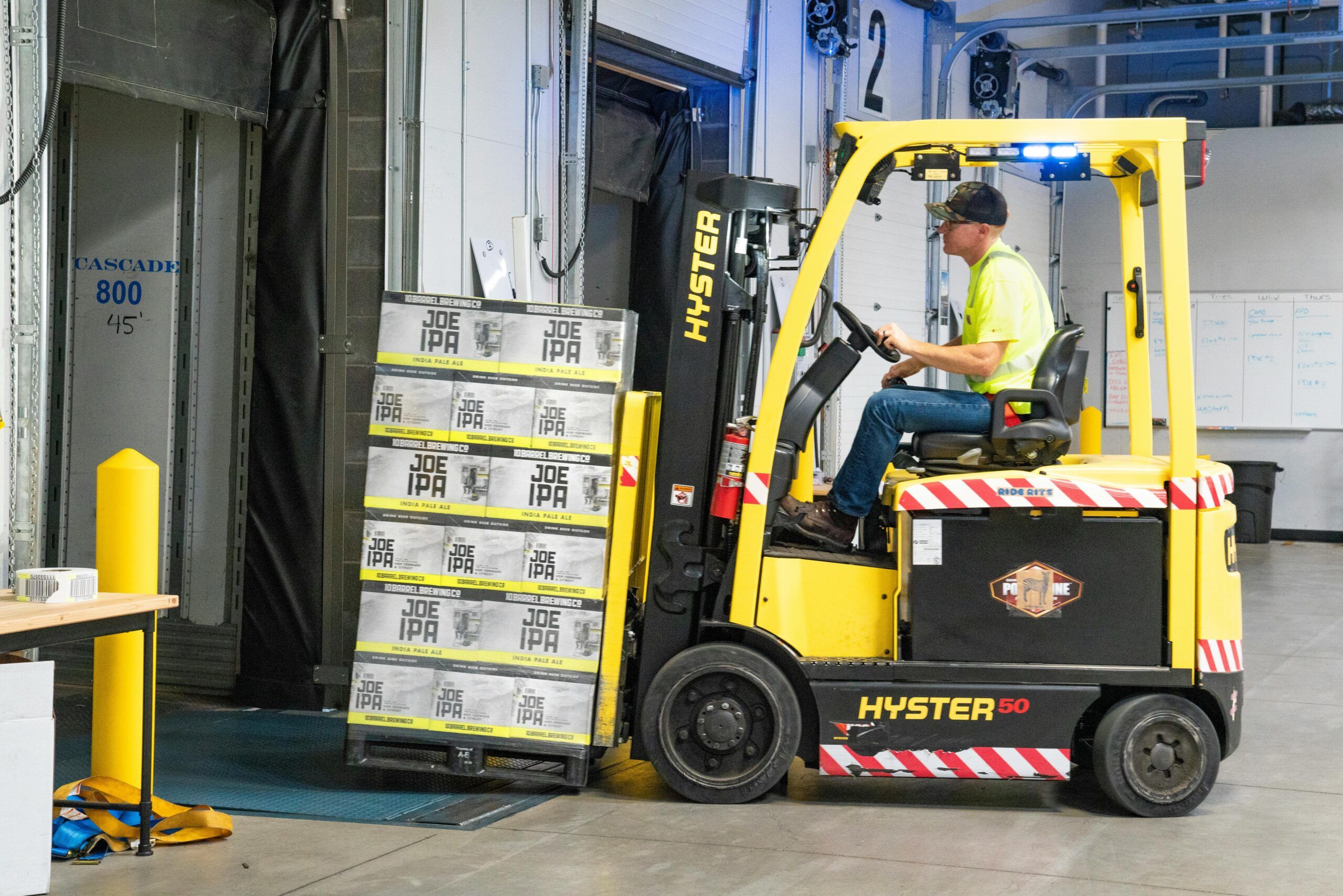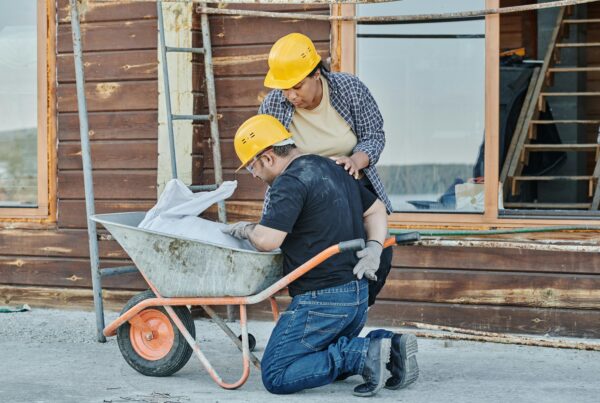As we all know, workplace safety is a non-negotiable in any company, no matter your industry. As employers, you’re legally obliged to perform thorough risk assessments and then implement an all-encompassing safety strategy that includes mechanical assistance, rigorous equipment maintenance practices, and effective handling techniques.
Wondering how can you build a workplace safety strategy that takes into consideration each of these elements? Read on to find out.
Mechanical Assistance
One of the ways you can improve safety and reduce the risk of injury in your workplace is through mechanical assistance.
So, what type of mechanical aids might be helpful to you and your team?

- Utilising a straightforward lever can mitigate the risk of injury by diminishing the bodily force needed to relocate a load or by averting potential injuries, such as trapped fingers!
- Hoists, whether powered or hand-operated, play a pivotal role in supporting the weight of a load, allowing the handler the freedom to control its position more effectively.
- Trolleys, sack trucks, or roller conveyors are practical solutions for significantly alleviating the exertion required for horizontal load movement.
- Chutes and flow racking offer convenient means of utilising gravity to facilitate the seamless movement of loads between different locations.
- Handling devices like hand-held hooks or suction pads prove invaluable in simplifying the handling of loads that are more difficult to grip.
- Hand pallet trucks and roll cages can prove effective manual methods for transporting loads that are on the bulkier side with greater ease.
- Turntables, inverters, and drum rotators can be useful tools for manipulating and managing unwieldy or bulky loads.
- Powered lift trucks are instrumental in positioning items, such as pallets, in preparation for the subsequent manual handling of individual items onto them.
Did You Know?
22.2% of all reported workplace injuries in the UK happen in environments with heavy use of machinery, such as workshops or factories. Ensure that your workers are well-trained in using machinery in order to avoid such injuries.
Maintenance of Equipment
Regular maintenance of all equipment used for manual handling is a fundamental aspect of workplace safety. This includes not only handling aids but also personal protective equipment (PPE).
To do this, you should make sure you have a properly planned preventative maintenance programme in place. This programme should encompass a defect reporting and correction system to ensure that any issues are addressed promptly before they cause problems for your team. Any defective equipment should be clearly tagged as soon as it is reported, indicating that it is out of use and needs repair or disposal.
Adhering to relevant regulations, such as the Provision and Use of Work Equipment Regulations 1998 and the Lifting Operations and Lifting Equipment Regulations 1998, is not just a legal requirement but a crucial step toward creating a safe work environment.
Case Study
In one case, an employee is reported to have experienced severe injuries to her right hand and arm as it got caught between an elevator web and clod roller while operating a potato harvester. The guard provided by the manufacturer, intended to cover these components and thus ensure safety, had degraded to the point where it offered no protection at all, and the operator’s employer had failed to provide sufficient equipment maintenance, causing her injury.
Instances like these illustrate the importance of ensuring all equipment is maintained and in good condition – machinery can be indispensable in reducing the strain on the human body during certain tasks, but only if it’s maintained properly and safe to use.
Good Handling Techniques
A proficient handling technique should not be viewed as a standalone solution to risk reduction but rather as a complement to other measures, such as the provision of lifting aids and the making of efforts to improve the task, load, or working environment. The effectiveness of good handling techniques hinges on adequate training, provided in realistic conditions, and regular practice.
For example, this might include guidance about the benefits of rocking, pivoting, rolling, or sliding a load instead of lifting it in certain situations where other opportunities for risk reduction are limited. However, workers should also be well educated in properly using machinery and handling equipment to support manual handling where necessary to prevent musculoskeletal injury.
At OFI, we provide a wide array of manual handling courses to help you cultivate a safe work environment and ensure your staff’s well-being. You can explore our course offerings here.
It’s essential to recognise that there is never a one-size-fits-all approach to lifting, but instead, numerous techniques, each with its merits, all suitable for different situations or individual circumstances.
Handling operations and training should always be tailored to employees’ tasks. Some specific examples of what this looks like in practice include:
- Empowering employees to identify loads that may pose injury risks, with the understanding that larger loads often correlate with increased weight and handling difficulty.
- In cases where the importance lies more in the fullness than the size of an item, such as a refuse-filled dustbin, workers should evaluate the load by inspecting its contents or employing techniques like rocking it from side to side before attempting to lift it.
- Exercising caution with unfamiliar loads; testing drums or closed containers that appear empty by attempting to raise one end.
- Gradual application of force when testing loads and prompting employees to seek alternative handling methods if they feel excessive levels of strain.
In Summary
Prioritising workplace safety during manual handling involves integrating mechanical assistance, implementing rigorous equipment maintenance practices, and instilling effective handling techniques, which all help minimise the risk of injuries. Beyond regulatory compliance, cultivating a safety-conscious culture through comprehensive training ensures the well-being of employees and promotes a productive and secure work environment.








